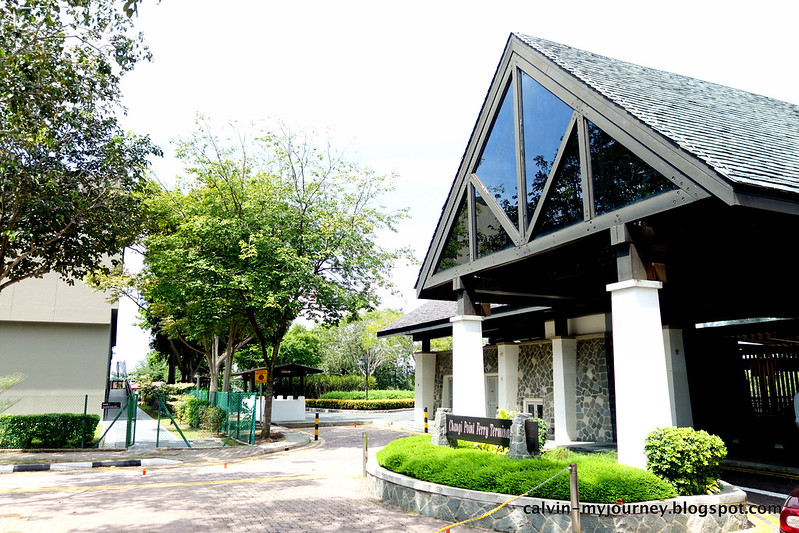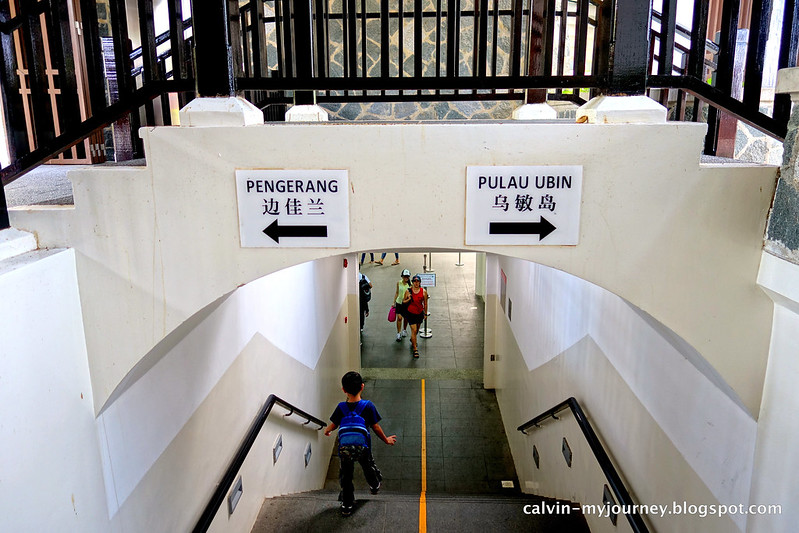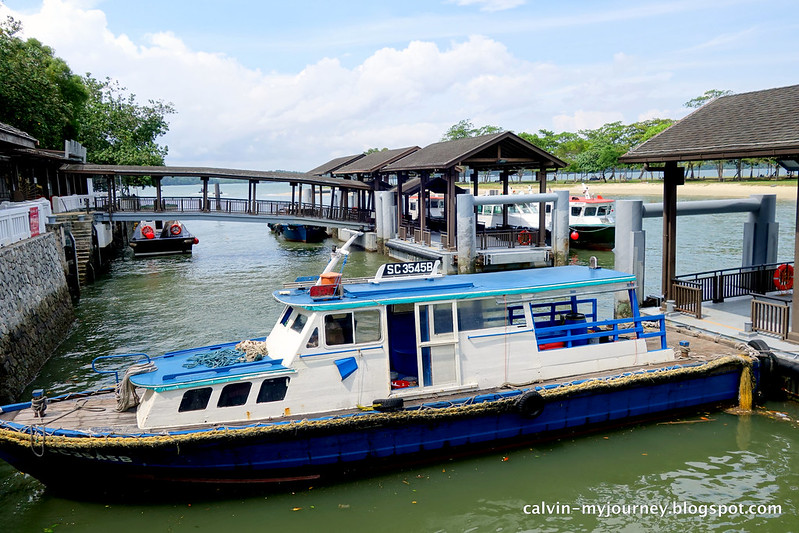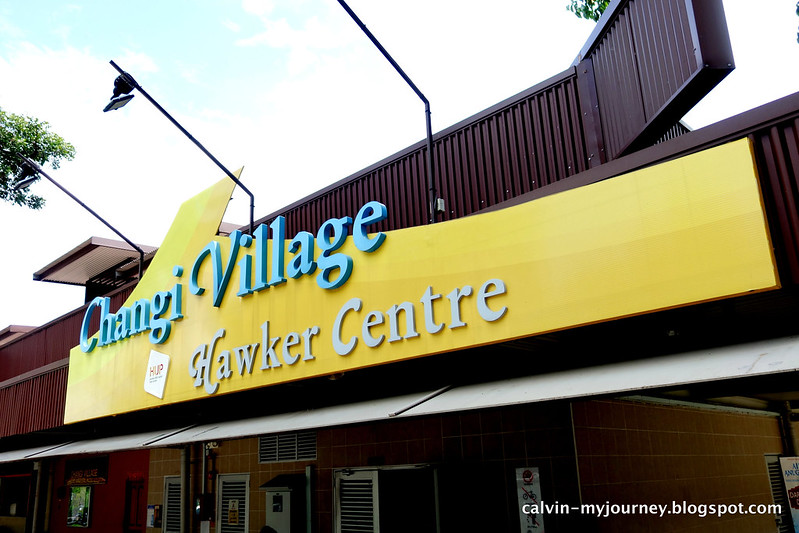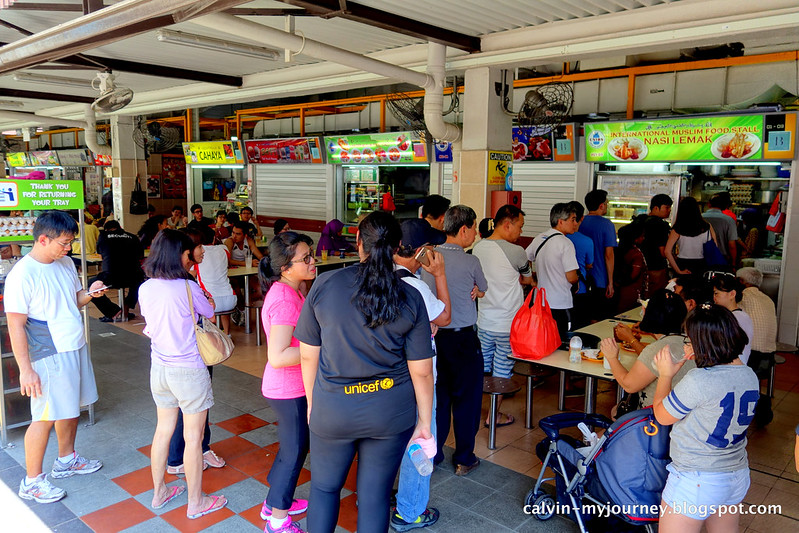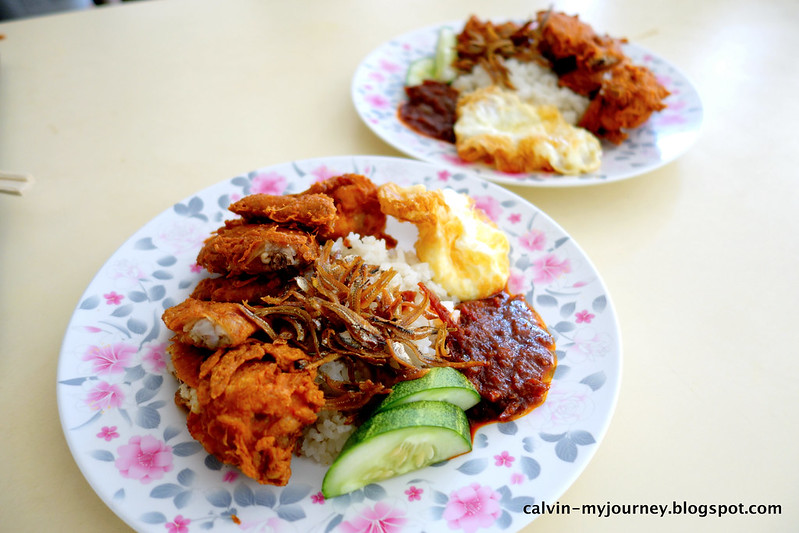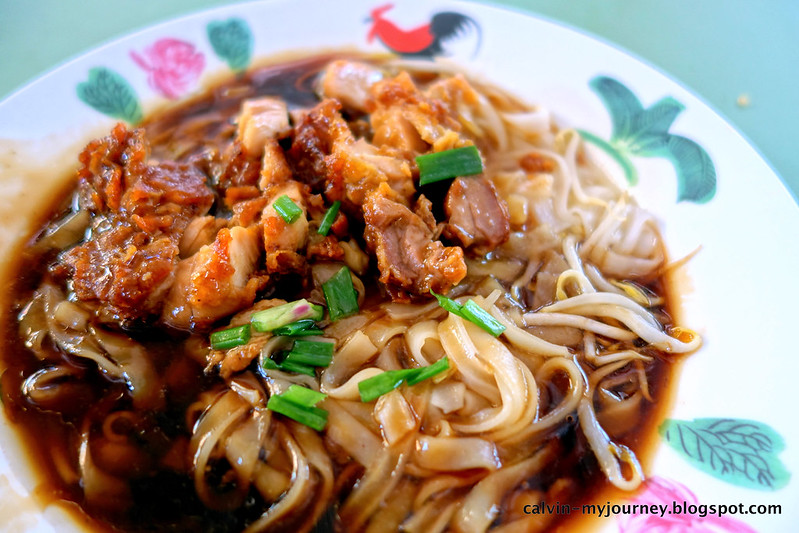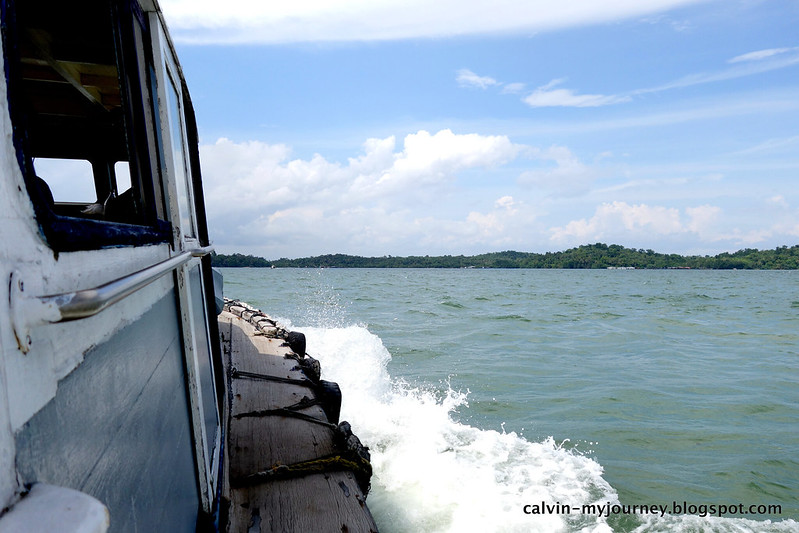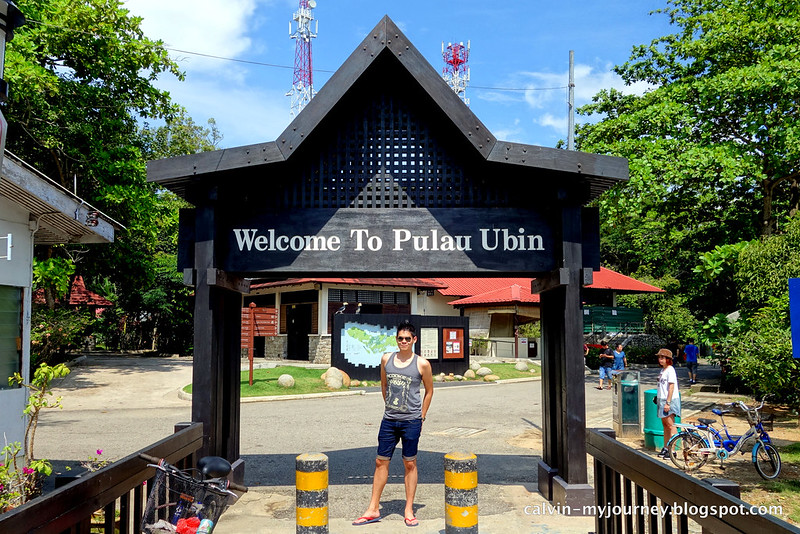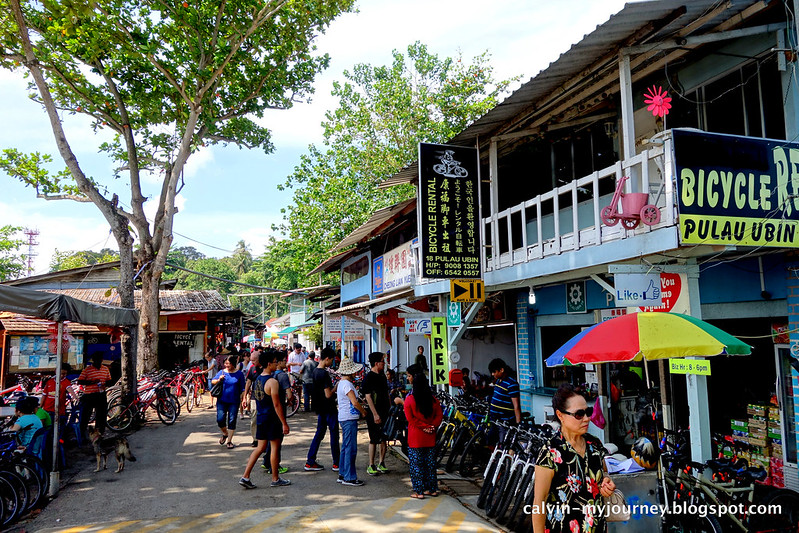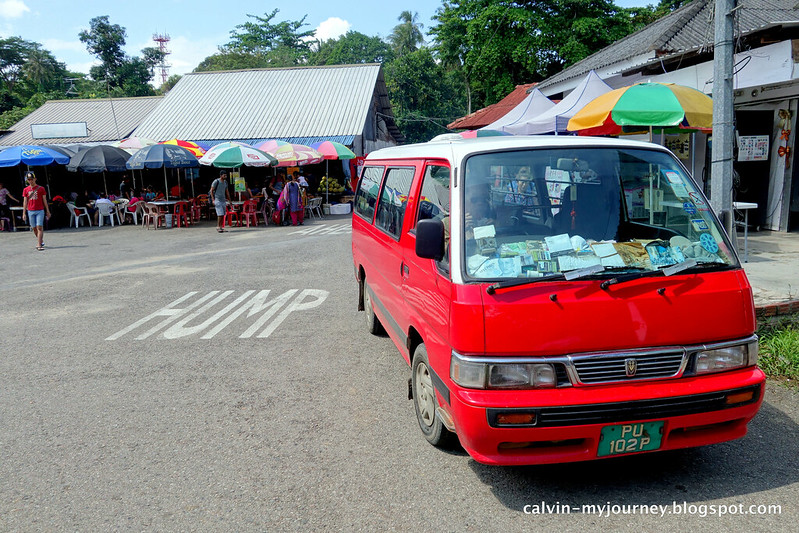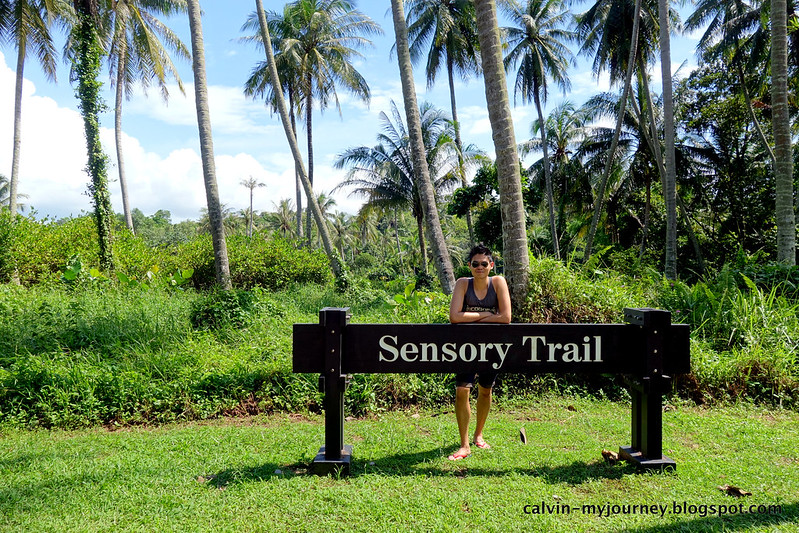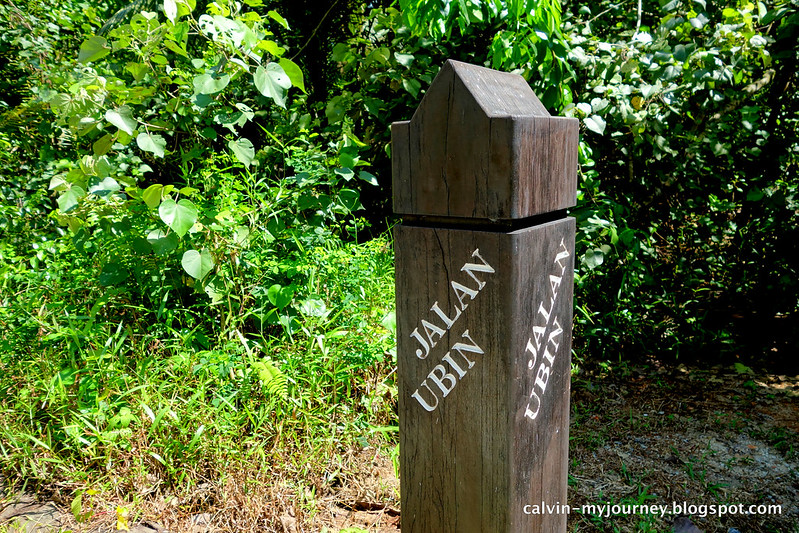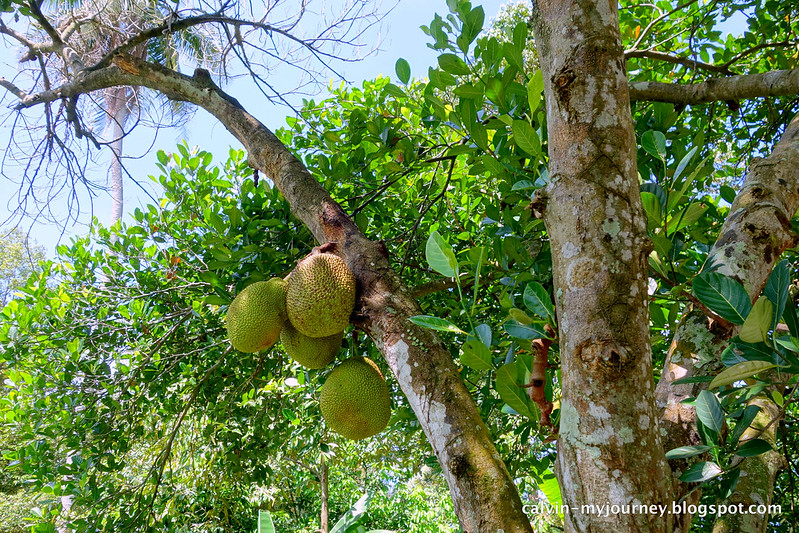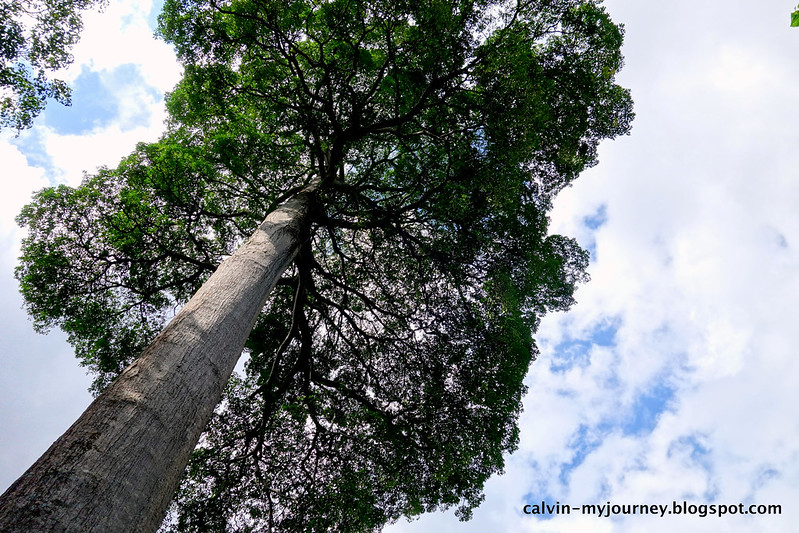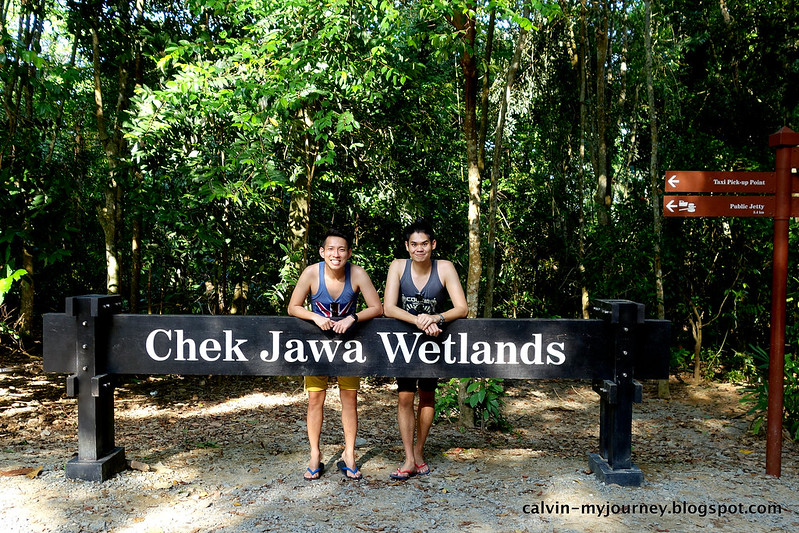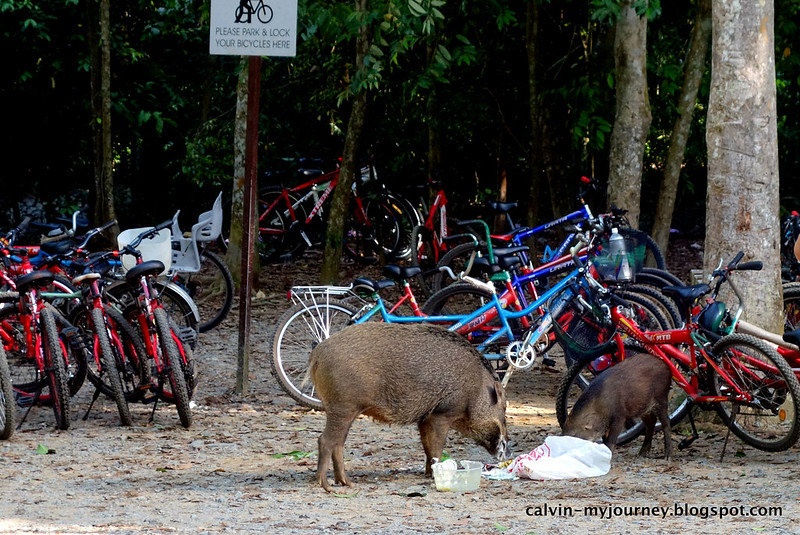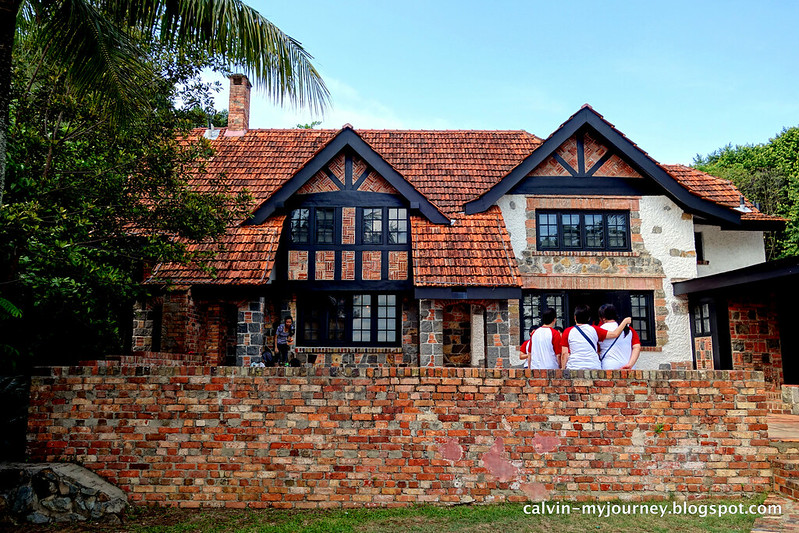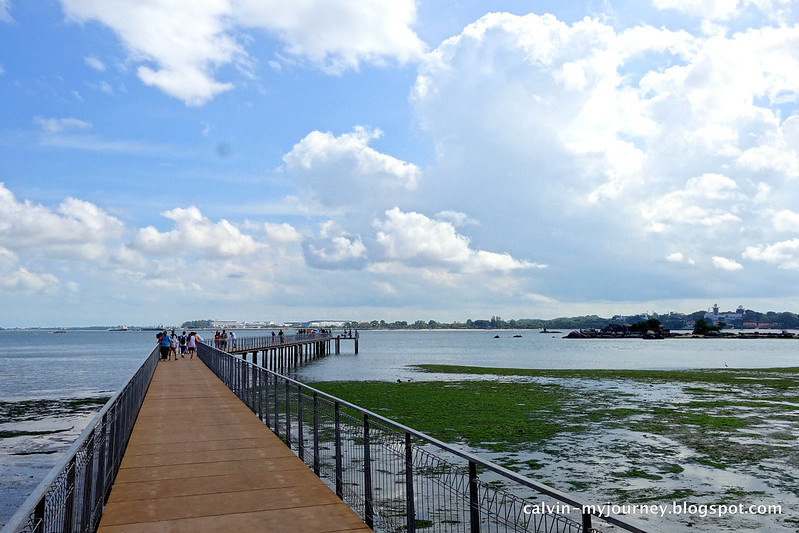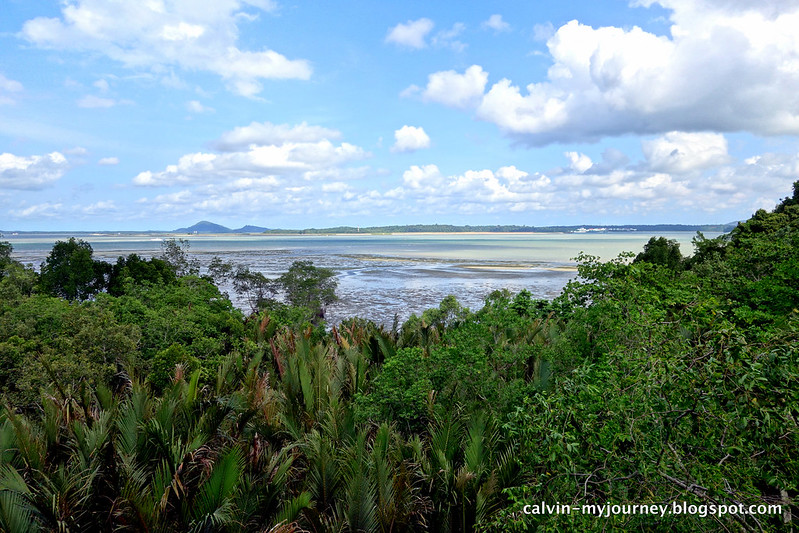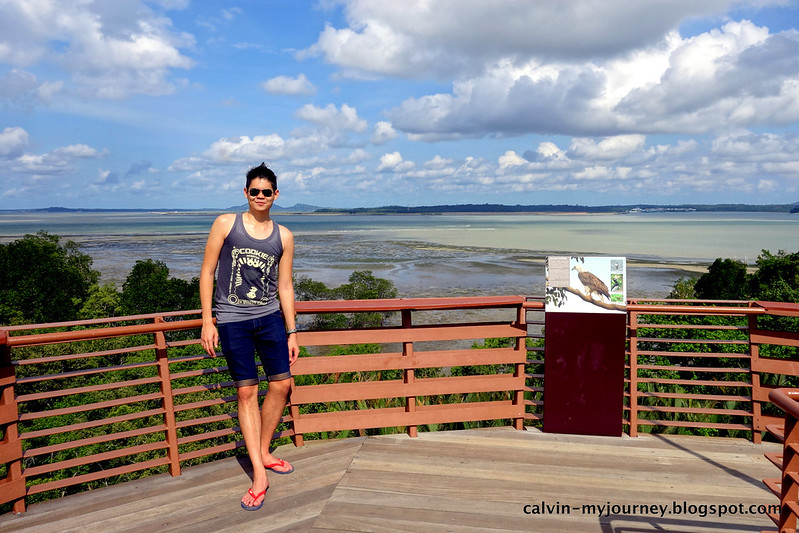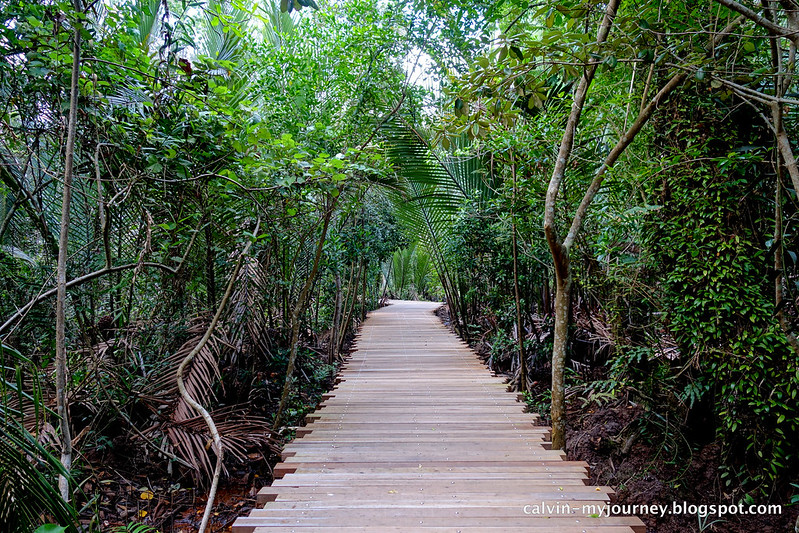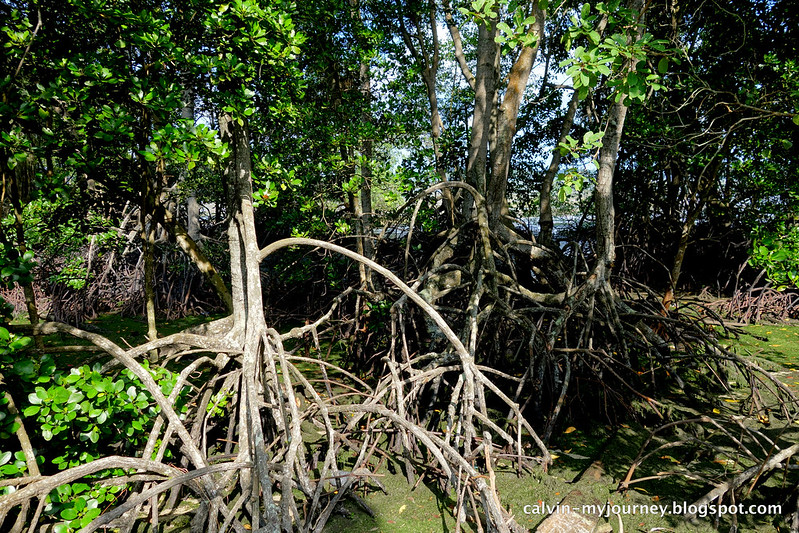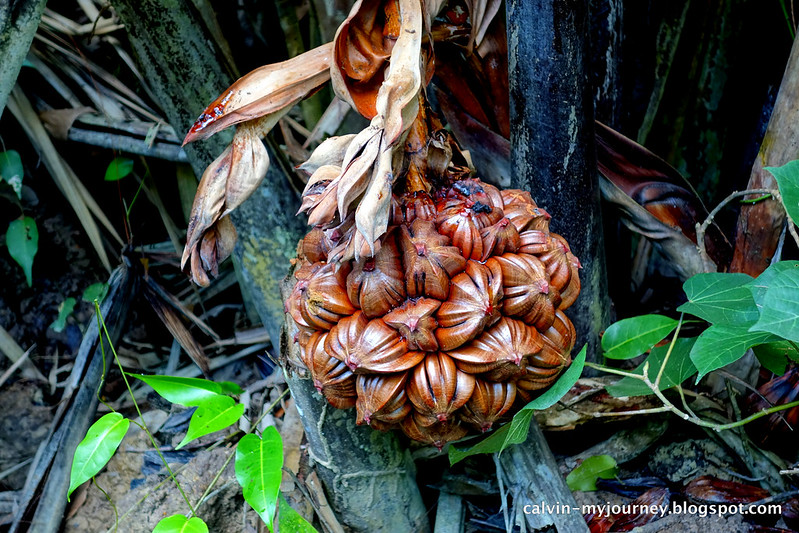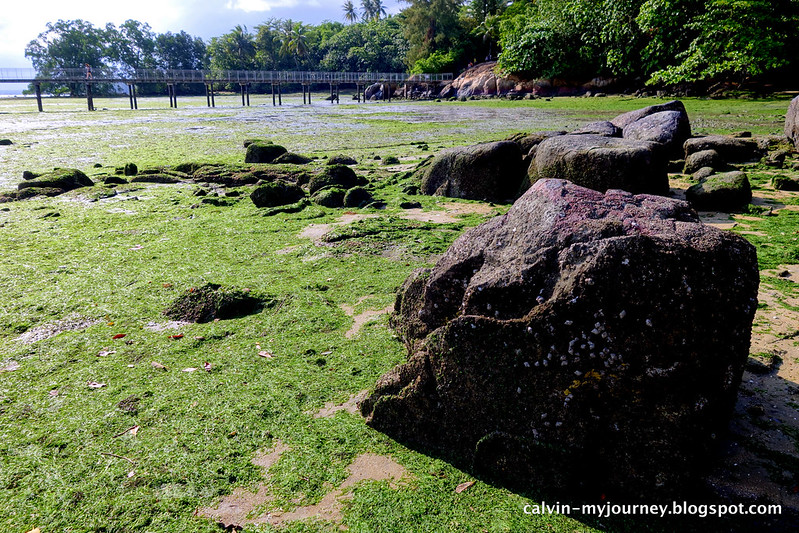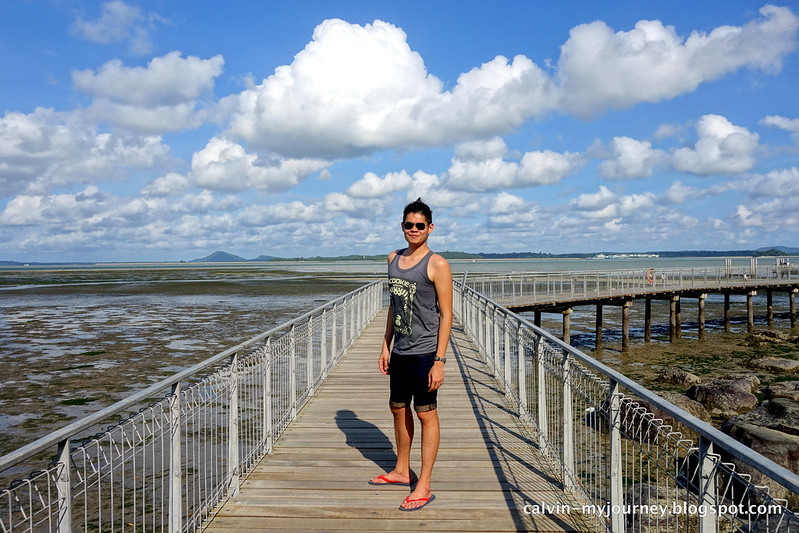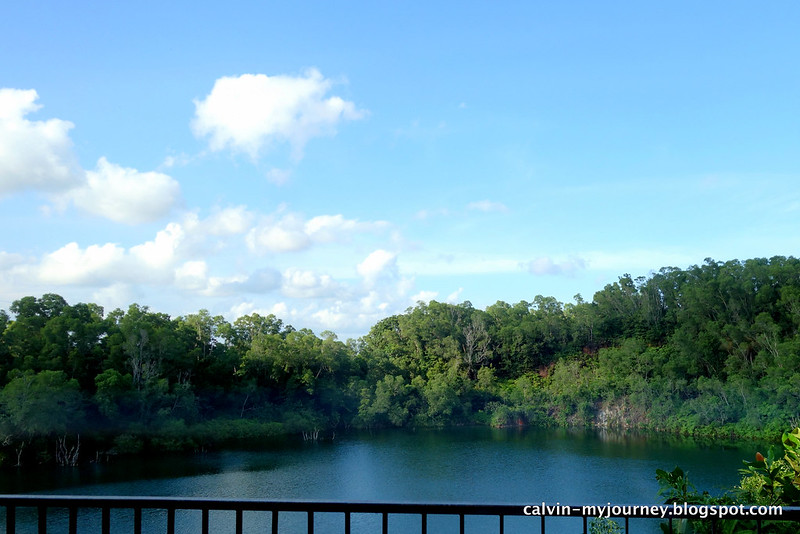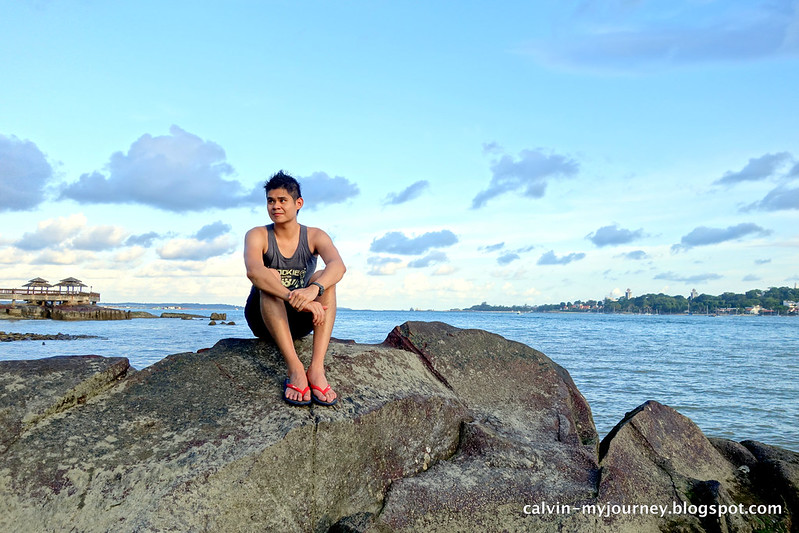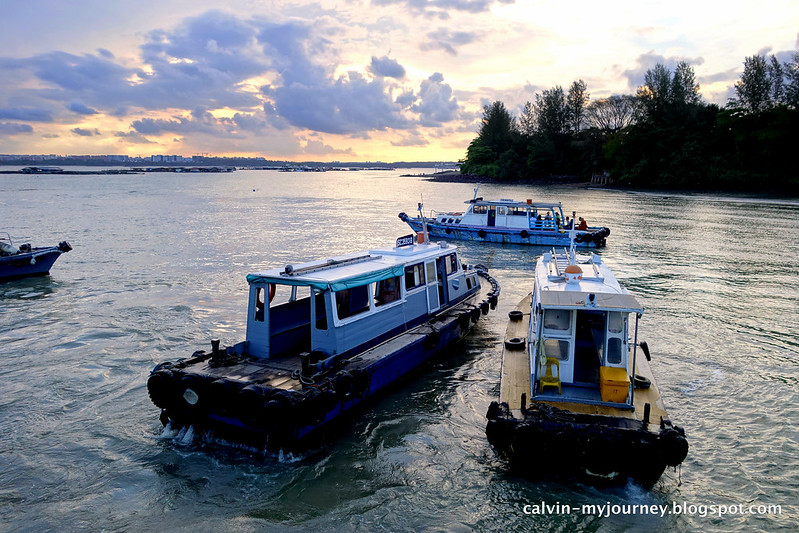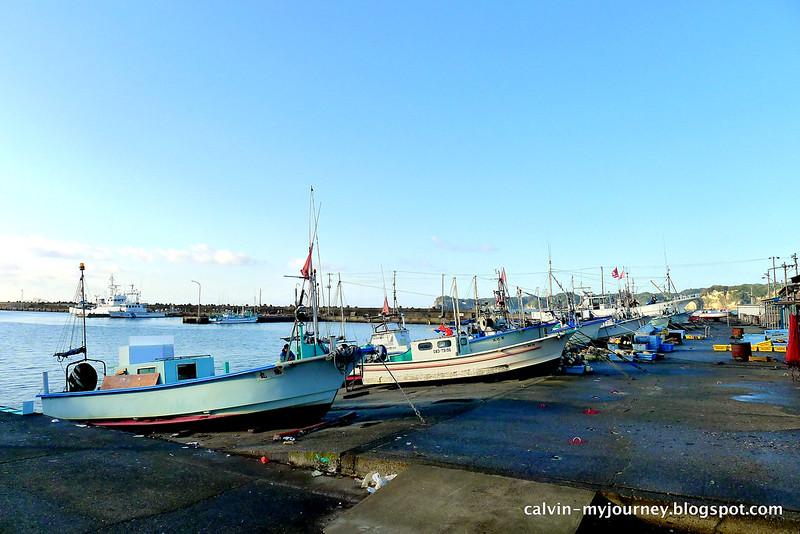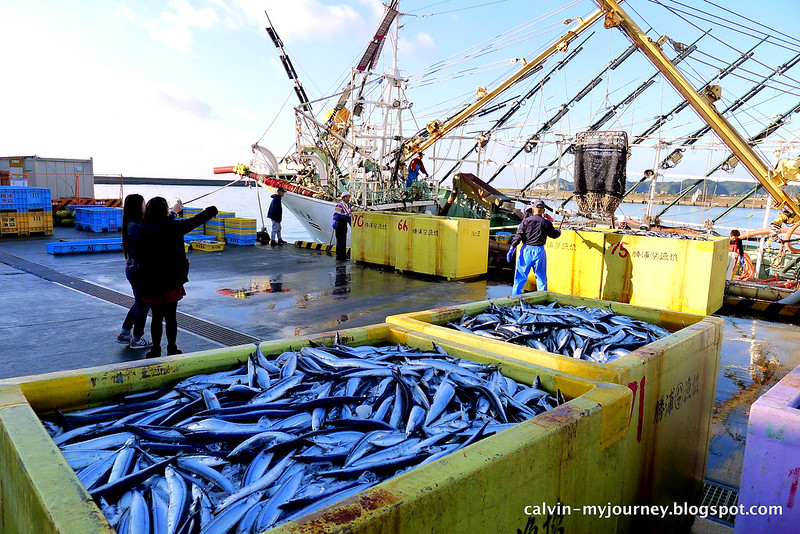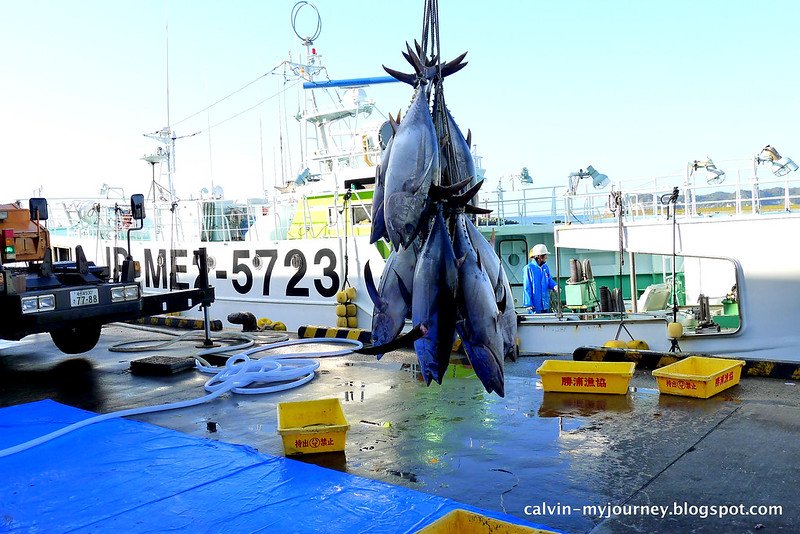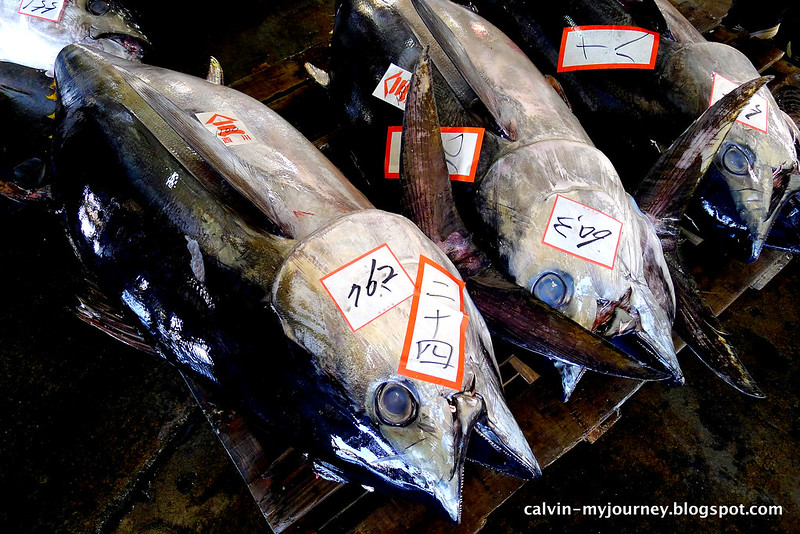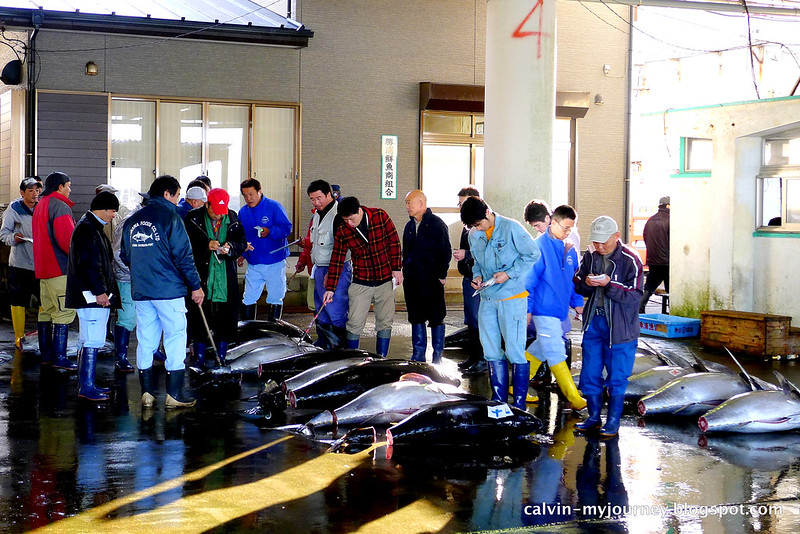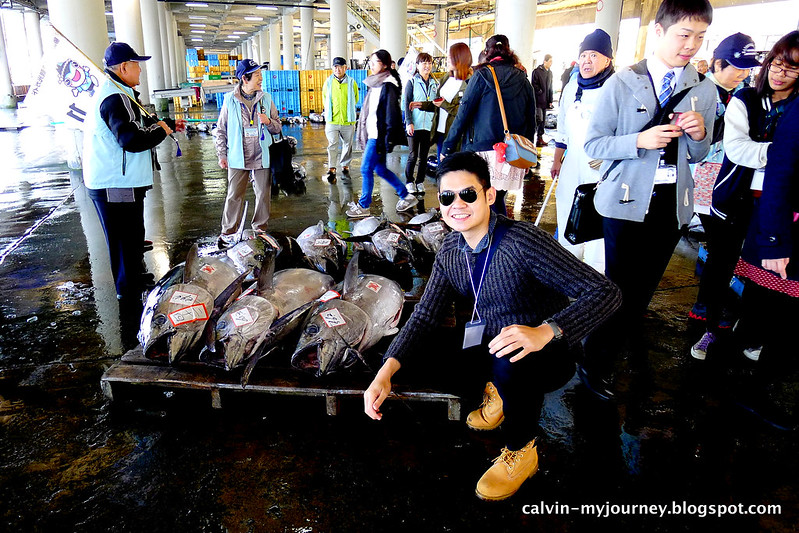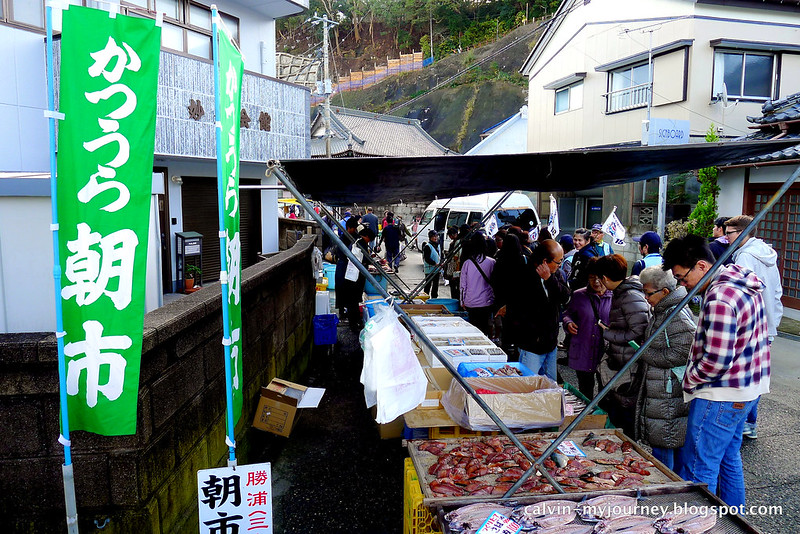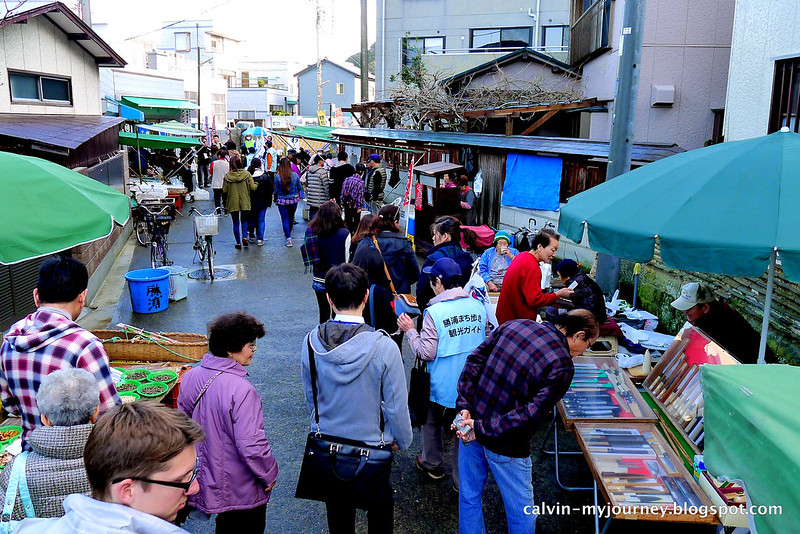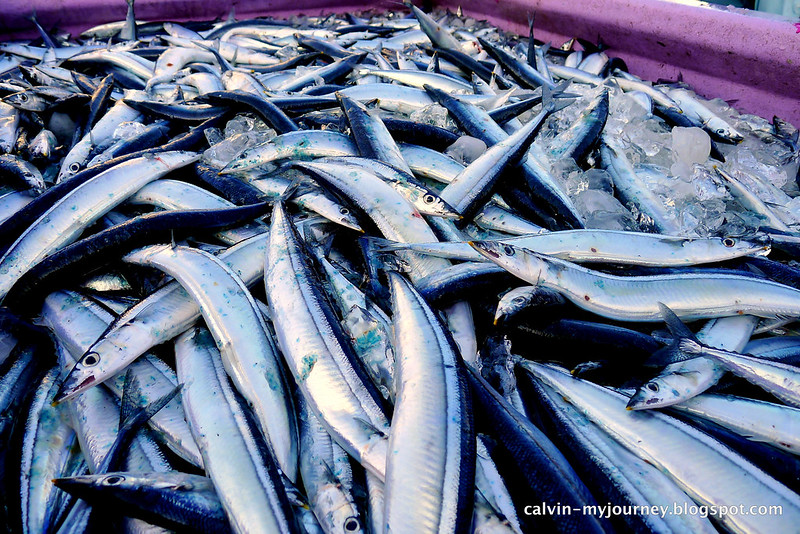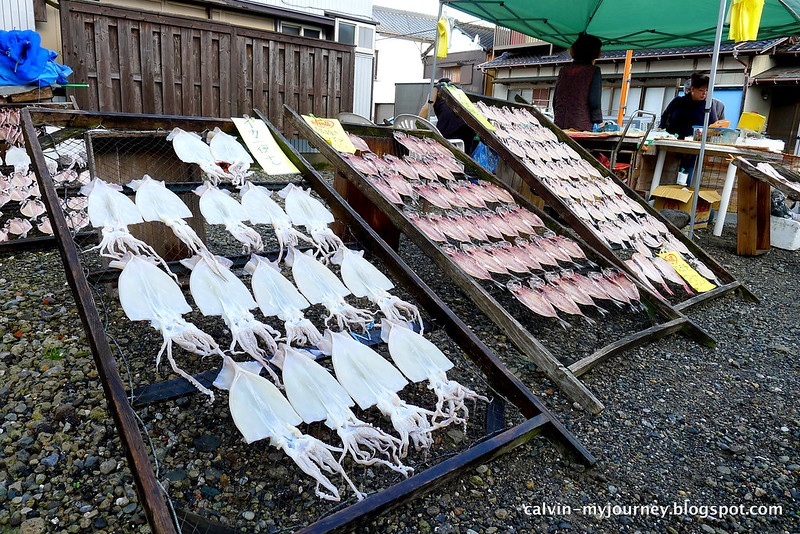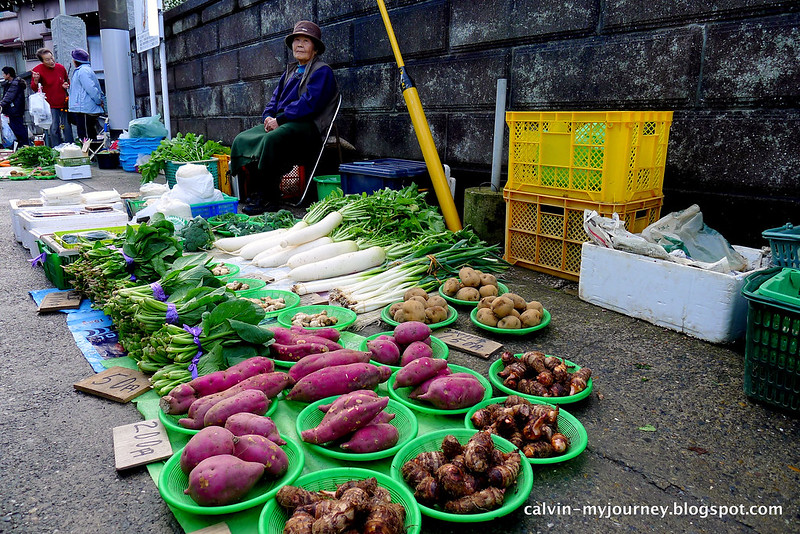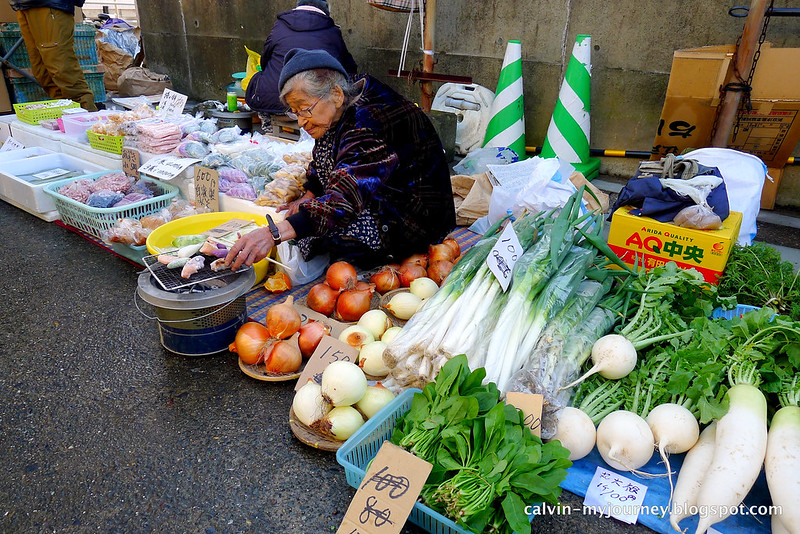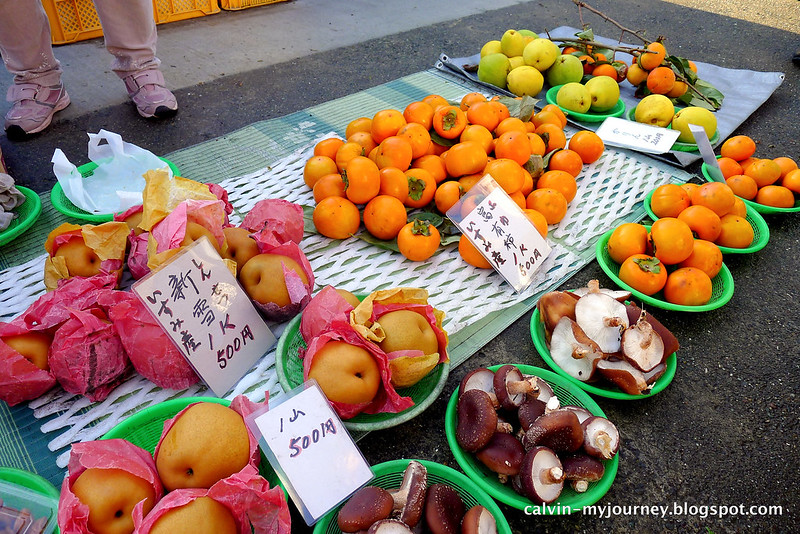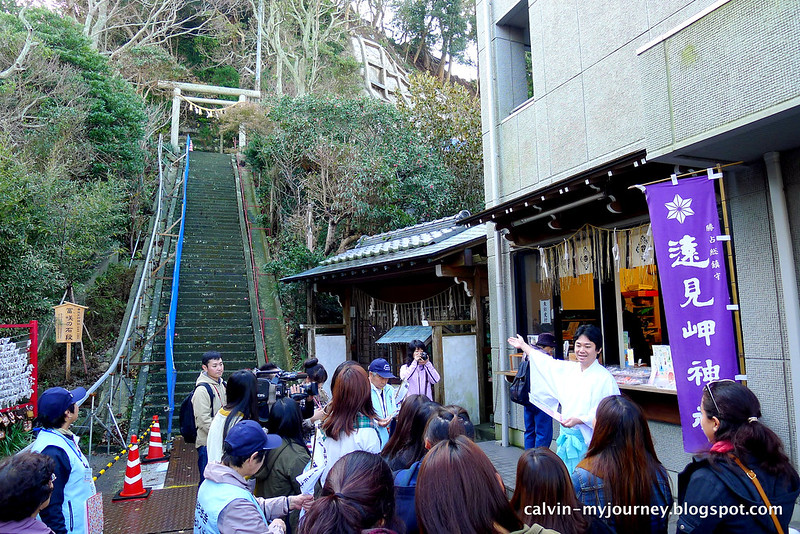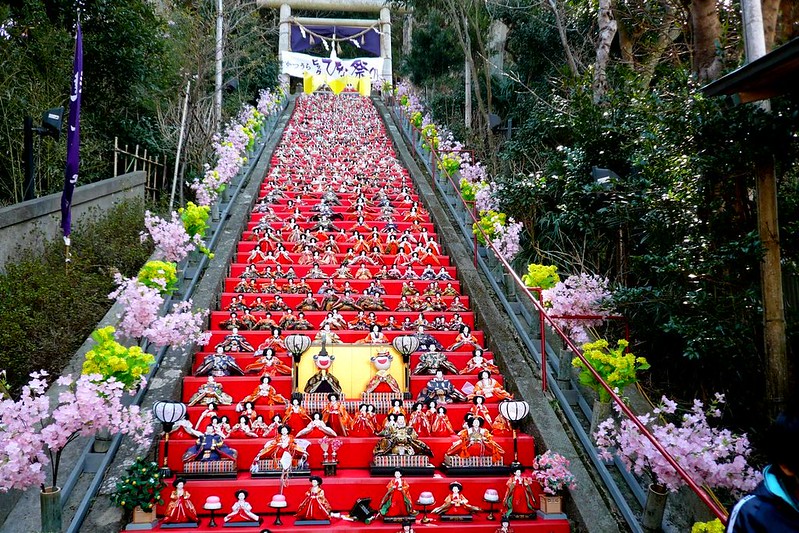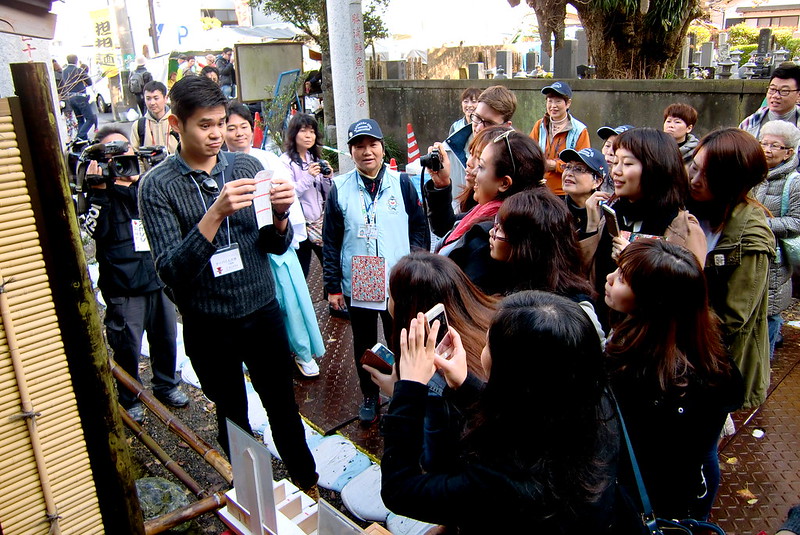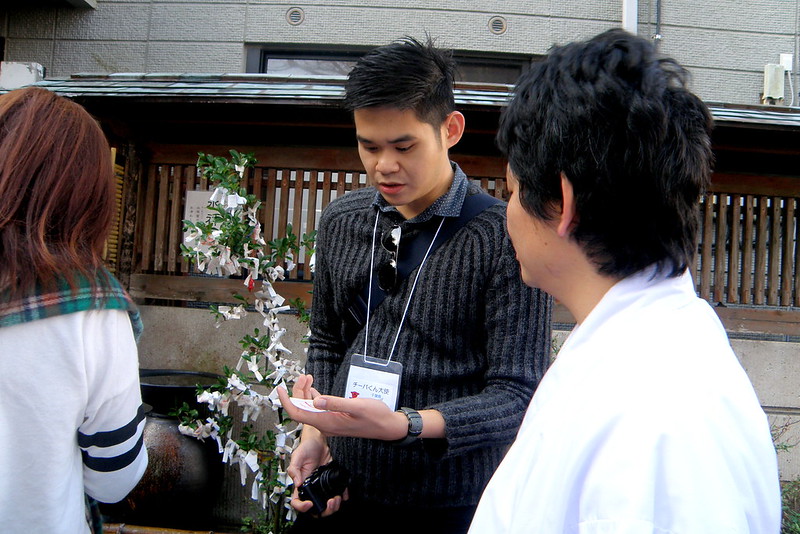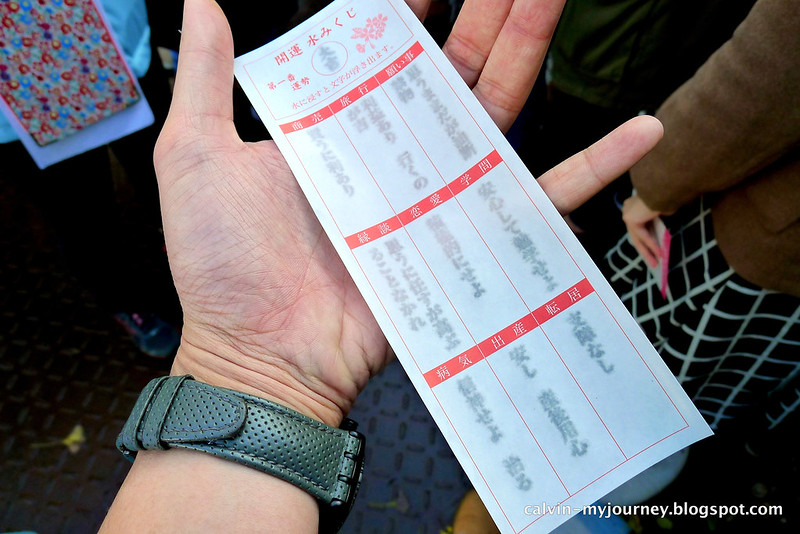"It was different in the past. There was a lot of togetherness.
We can leave our house open and not worry about anything.
I come back often because it's peaceful here."
Madam Samsiah Abdullah, 57
Pulau Ubin. This island sits just off the north-eastern corner of mainland Singapore with a size as big as 170 Esplanade Theatres (the two durian-shaped structures in the Lion City) combined. In a metropolis like Singapore, finding a quiet countryside spot to enjoy the charm of rural life is like finding a needle in the haystack. Okay, maybe that is a tad exaggerated, nevertheless I am sure there are times where we feel like escaping from the bustle of the city; to escape to some untouched land to get close with nature, which still retains the rustic beauty and simplicity of a bygone era.
Back in the late 1950s, Pulau Ubin had enough residents to build its own maternity and child health clinic. However, life seems to be ebbing away from this boomerang-shaped island. Its population has dwindled from 2,000 between the 1950s and early 1970s to just 38 today. That however, does not stop it from being ranked as one of the top destinations in Trip Advisor among foreign visitors when they travel to this part of the world.
There are not many traditional villages or kampong remaining in Singapore, and Pulau Ubin is among one of them. A visit to this island gives visitors, especially the younger generations to time-travel more than half a century ago, to learn how people in those days depend on wells for water, diesel generators for electricity and farming and fishing as means of living.
How to get to Pulau Ubin
It is relatively simple to get to this island. Get to the MRT Tanah Merah station on the East-West Line (green line) and take SMRT bus No. 2, which terminates at Changi Village Terminal where the Changi Point Ferry Terminal is located. The bus ride to the last stop takes approximately 30 minutes. Once you reaches Changi Village bus terminal, it would be a great idea to grab some food at the Changi Village Hawker Centre to fill your stomach first, as there are limited number of restaurants and eateries places on the island.
Changi Point Ferry Terminal is located just a stone's throw from the hawker centre.
Two separate lanes that will take you to two different countries!
The most common mode of transportation to get to Pulau Ubin.
Once your stomach are full, it is time to talk a short walk to the ferry terminal, which sits just next to the busy hawker centre. Walk down the stairs and join the correct queue (the right one to Ubin). Otherwise, you may find yourself ended up at Penggerang in Johor haha!
Once you are called, just hopped into one of these bumboats, which will leave every time a group of 12 is formed. These bumboats operate from 6 a.m. to 8 p.m. and each ride takes approximately 15 minutes. A one-way ride to Ubin is S$3 per person to be paid to the captain on board and an additional S$2 for bicycle. There is no immigration clearance or custom checks; however our belongings were scanned and we had to go through a metal detector on the way back.
Time to fill our stomach before exploring the island!
Eateries at Changi Village
I have heard about the highly raved nasi lemak of Changi Village and this was the chance to try on them. Mention Changi Village and nasi lemak, and locals will surely recommend you International Nasi Lemak stall. It used to be the kings among the nasi lemak stalls in the old days, with the longest queue. However, the hawker centre had undergone a renovation recently, and the original stall of this nasi lemak stall has moved, replaced by another nasi lemak stall - Mizzy Corner Nasi Lemak. That explains the long queue you see at Mizzy Corner nowadays, because probably people thinks that this is the original International Nasi Lemak stall. So, where has the original stall gone to?
It is still within the same hawker centre, but slightly different stall number. However, one thing to take note is that you have to be ready to queue for AT LEAST 30 minutes (however, this also depends on the time of the day). When we were there, people in front of the queue tapao-ed like 10 packets per person which contributed to the long waiting time. When you see the business is that good, naturally expectations on the food turns high.
Long queue at International Nasi Lemak stall. The queue was so long, that it didn't fit into this photo!
Got our plates of nasi leak after queuing up for 32469 hours hahaha!
The rice used to be the whole grain jasmine rice with a toothy texture, but looks like now they are using the lighter, starchy rice. Nevertheless, the sambal was excellent (in fact, I went to the mak cik and requested for extra samba halfway through my meal) and the fried chicken wings was awesome; covered with light and crunchy batter. Verdict - 4/5.
Address: Blk 2 #01-03, Changi Village Food Centre, 500002 Singapore
The yummy plate of chicken chop hor fun from Weng Kee.
Another food worth trying is the chicken chop hor fun at Weng Kee Ipoh Hor Fun. There are people who travel all the way from Tuas in the west end of Singapore just to try on this tongue tingling, lip smacking plate of meal. The hor fun (flat noodle) was really smooth and the chicken cutlet was crispy on the outside and so juicy and savoury on the inside. These two ingredients are then combined with that special traditional dark brown sauce to give you an amazing dining experience. Verdict: 4/5
Address: Blk 2 #01-19, Changi Village Food Centre, 500002 Singapore
Opening Hours: 09:00 - 22:30
Hello! It's me!
Exploring Pulau Ubin
After enjoying the sea breeze riding on the bumboat, we arrived at the Pulau Ubin jetty to a very bright and hot weather. The first thing you may spot is a sign board that welcomes the visitors to the island. Take a left turn will bring you to a row of bicycle shops that provides bicycle rental service and also several stalls and restaurants selling food. You can rent a bike for whole day for about S$8, but the price may differ depending on the shops; so it will be down to your skills to get the best deal. Just make sure the bike that you rent are not too old and functioning well, because we saw some bikes broke down along our way to Chek Jawa wetlands. Some of the shops even provide you a free map to see the best possible route to maximise your island exploration.
We however, decided not to rent a bike but to explore the island on foot. It would be quite troublesome to have to get down the bike every time we want to take photos. Alternatively, you can also take a van ride around the island.
Bicycle town of Pulau Ubin hahaha!
If you are coming in big groups, renting one of these vans would be a better choice.
Here is one tip for everyone before you start to explore the island - go for your restroom break first! Toilets around Ubin Island are pretty scarce, unless you have no problem going au naturel and doing it in the bushes haha! Also, it is recommended to apply sun block and spray some insect repellent before beginning your journey on the island.
Ubin Island is free for everyone to visit and there is no opening or closing time, however the island's small eateries, bike rental shops and transportation services operates during daylight hours only so it will be wise to visit within that period.
We didn't really walk through the sensory trail, so having a photo on the signboard should be enough? Lol!
Pulau Ubin's Sensory Trail
An excellent way to experience Ubin's wonderful nature through your different senses is by exploring the Sensory Trail. It was developed 20 years ago to allow the visually handicapped a chance to experience Ubin using their senses of touch and smell. This trail is an easy 1-hour easy walk that will bring you to see the different vegetables, spices and herbs that the villagers used to plant for their own consumption.
This will be a great eye-opener for visitors from the city, who has not experienced living in a rustic environment, that takes you through the backyard planting of the Pulau Ubin village home, where some fruit trees such as papaya, banana, rambutan and breadfruit are planted. You will also get to know the economic crops that are important to Pulau Ubin in the 1970s. There are private-guided tours available, upon request.
A signboard of the main road of the island.
Saw a few wild fruit trees along the way, and this jackfruit tree is one of them.
This magnificent Common Pulai, which is 35-meter tall with 6.4-meter grit is hard to miss as you walk along the tree trail. It is easily recognisable from its pagoda-shaped branching pattern and simple leaves that are arranged in whorls.
Chek Jawa Wetlands
A trip to Pulau Ubin is not complete without a visit to the unique Chek Jawa Wetlands, one of Singapore’s richest ecosystems. Chek Jawa is a unique natural area where seven interdependent ecosystems - namely, its coastal forest, mangrove forest, its rocky shore, the sandy shore, sand bar, sea grass lagoon and the coral rubble meet and mix.
This wetlands is an intertidal area, with various ecosystems unveiled at low tides of 0.5 metres and below. At higher tides, the area will be submerged under water and you will not be able to see most of the marine life. To avoid disappointment, do refer to the tides table when planning your visit here.
Hello from Chek Jawa!
The wetlands is opened from 8:30 a.m. to 6:00 p.m daily. Visitors can either hire a van or rent a bicycle from the main village upon arrival at the Ubin jetty. For the more adventurous, a walk to Chek Jawa would take about 40 minutes. For the safety of visitors, bicycles and vehicles will have to be parked at designated lots near Punai Hut and visitors will have to take a 5-minute walk inside. Do remember to ask for a bicycle lock when you rent your bicycle.
We had a free-and-easy venture around the wetland, but for those of you who prefer to learn more about Chek Jawa's natural heritage on a guided tour, you can book in advance here. Each tour takes one hour and costs $60 (maximum 15 people per group).
Unexpected friends welcome our arrival at the entrance to Chek Jawa!
Our hungry friends were feasting on visitors' food!
After walking more than 30 minutes from the main village, we finally arrived at the Punai Hut. Here is the dropping point for those who cycled or took a van, before they walk the rest of the way inside Chek Jawa Wetlands. The other visitors and us were greeted with a pleasant surprise - a family of wild boars roaming around freely. There was one huge one (which I assume is the mother) and two smaller baby piglets. Wild boar piglets are distinctive animals as they have light brown fur, with cream and brown stripes that run down their backs.
These wild boars are usually tame, but never try to provoke them whatsoever. They were looking around and tried to steal whatever they could from the bicycles that were parked there. There were some unlucky visitors who left some food inside the basket, and these wild boars managed to steal some yummy yogurts and snacks from inside the basket!
The beautiful Chek Jawa Visitor Centre is a great spot for photography.
Linger at the jetty for a glimpse of Pulau Sekudu (Frog Island) and sweeping views of the sea.
Our first stop was to the visitor centre, also called House No. 1. This beautiful little cottage was converted from a Tudor-style house with adaptation to the tropical climate, built in the 1930s as a holiday retreat and similar to the cottages built in tea plantations during the British colonial era.
Today, this charming structure houses information about Chek Jawa's history and wildlife. It was also designated a Conservation Building by the Urban Redevelopment Authority (URA) in 2003 and is probably the only building left in Singapore with a working fireplace. There is also a viewing jetty behind this visitor centre, where the view stretches all the way to the Tekong Islands on the horizon.
Picturesque view atop Jejawi Tower.
Breathtaking view like this don't come often.
We then proceeded by climbing the stairs up the 21-metre tall Jejawi Tower for a bird's eye view of Pulau Ubin. The weather was awesome and we managed to get a panoramic view of the whole island plus some neighbouring islands from the observatory deck. It was very windy when we were up there, and we could actually fell that the tower was shaking! As the tower can support only 20 people at one time, make sure the capacity is not exceeded when you are up there.
Next was the 1-kilometer boardwalk which was built in 2007, allows visitors to get up close to plant and marine life without damaging the area. Special care was taken to construct the boardwalk, which is made from concrete but simulated to resemble timber. The boardwalk is divided into two parts - the mangrove and the coastal loops. Along the way, there are educational panels and directional signs on the types of plants and animals that can be seen. Rest points are also strategically stationed along the routes.
The boardwalk along the mangrove loop.
To survive in the oxygen-poor mud, Perepat trees send out pneumatophores (breathing roots) that stick out of the mud, allowing the exchange of gases and helping the trees to ‘breathe’.To combat the high saline conditions, excess salt is restored in old leaves, which are later shed.
The Attap Palm is one of the few palms that grow well in mangrove conditions. It is commonly found growing in dense clusters with their fronds growing out from the soft mud. The leaves are used for roof thatching in "attap houses".While it may look trunkless, the trunk of the Attap Palm actually lies horizontally underground. The fruits group together to form a large brown ball and break off into individual fruits when ripe.Attap Chee is the name given to the translucent flesh inside the fruit. It is processed and used in local desserts such as ice kacang.
The mangrove loops is a 500-meter route thats starts at the coast before taking you into the mangroves. Visitors will be able to see the typical mangrove trees found in Ubin. On quieter days, you may be able to spot some of the animals that live in this habitat. Stretching 600 meters, the coastal loop follows the coastline of Chek Jawa and allows visitors to observe the various habitats without getting wet. As the route take you round the tip of the headland, you will be able to enjoy different views of Chek Jawa.
The walk didn't fail to amaze us with plenty of encounters with the marine creatures. Many species found here are usually nocturnal and prefer to stay camouflaged. Hence, they are sometimes difficult to spot, especially for first-time visitors. We had the chance to come up close with mudskippers and fiddler crabs, among others. If you are lucky, you might even spot mud lobsters, sea stars, sea hares, sea squirts, octopuses, sand dollars, sponges and cuttlefish.
These beautiful rocks remind me of the Moeraki Boulders in New Zealand.
Another shot on the coastal loop on one fine day.
The long walk and hot weather really had us burned out by this time, and we thought of taking the van to return to the main village. Usually a return trip costs about S$20 for the whole van; so if you are in a big group, it is definitely a good idea to take a van instead of walking. When you are ready to go off, just give the driver a call and he/she will pick you up. For our case, we managed to hitch ride and join another group of visitors on our way back. They were kind enough to accommodate an additional of two persons into their van, which come to our great relief!
During our ride back to the main village, the van driver stopped at one of the must-see point of Ubin. Pulau Ubin means Granite Island in Malay, as the rocks from the island was previously used to make tile flooring. The abandoned granite quarry offers an awe-inspiring view of the granite hills and stunning aqua-coloured lake, that is just simply gorgeous. Who would have thought that Singapore still have such charming, authenthic, and unspoilt hidden spots. I am sure everyone will be mesmerised by the breathtaking view of the lake. Not a bad way before bidding farewell to this island, isn't it?
This magnificent lake is also known as the Blue Lake.
Pulau Ubin's charm has always lain in its quiet rural surroundings with kampung houses and forest paths, reminding Singaporeans of a slower time in years past. The island was truly an eye-opener especially for us city-dwellers, which will definitely promise you a fun and enriching weekend getaway for the family. We'll be back for sure to explore more of Chek Jawa's unique nature area one day!
Some vain moments on the beach after our day exploring the island.
Time to take the bumboat and head back to mainland Singapore.
Tips for Pulau Ubin Visit
- Bring sufficient water to quench your thirst while touring the island. Water from public toilets and wells are NOT safe for drinking.
- Having some snacks or finger food would be a great addition.
- The weather could be unpredictable, so you may want to bring along a foldable umbrella or poncho in case of bad weather.
- Expects lots of walking on the island, so a pair of good running shoes is a must. Avoid slippers and sandals, as some part may be muddy and bumpy.
- Bring along caps and shades, which will definitely come in handy when the sun is out.
- Bring sunblock and insect repellent to protect your skin from the unwanted ultra-violet rays and insect bites, which can be really annoying.
- Stay on designated roads and tracks while exploring the island.
- Do not feed or go too near to the wild animals (monkeys, wild boars).
- And of course, a camera to capture all those beautiful scenes and exciting moments!


